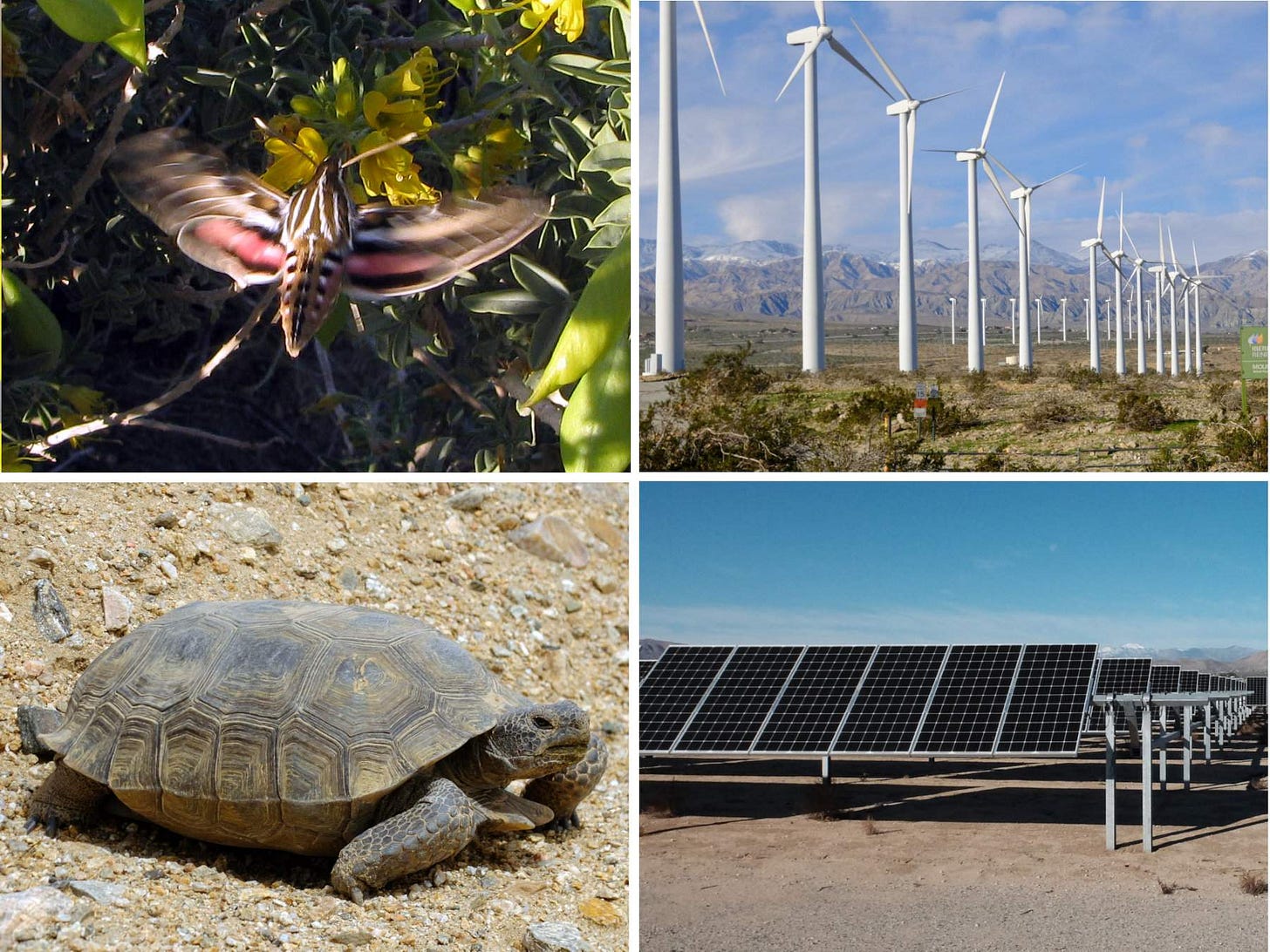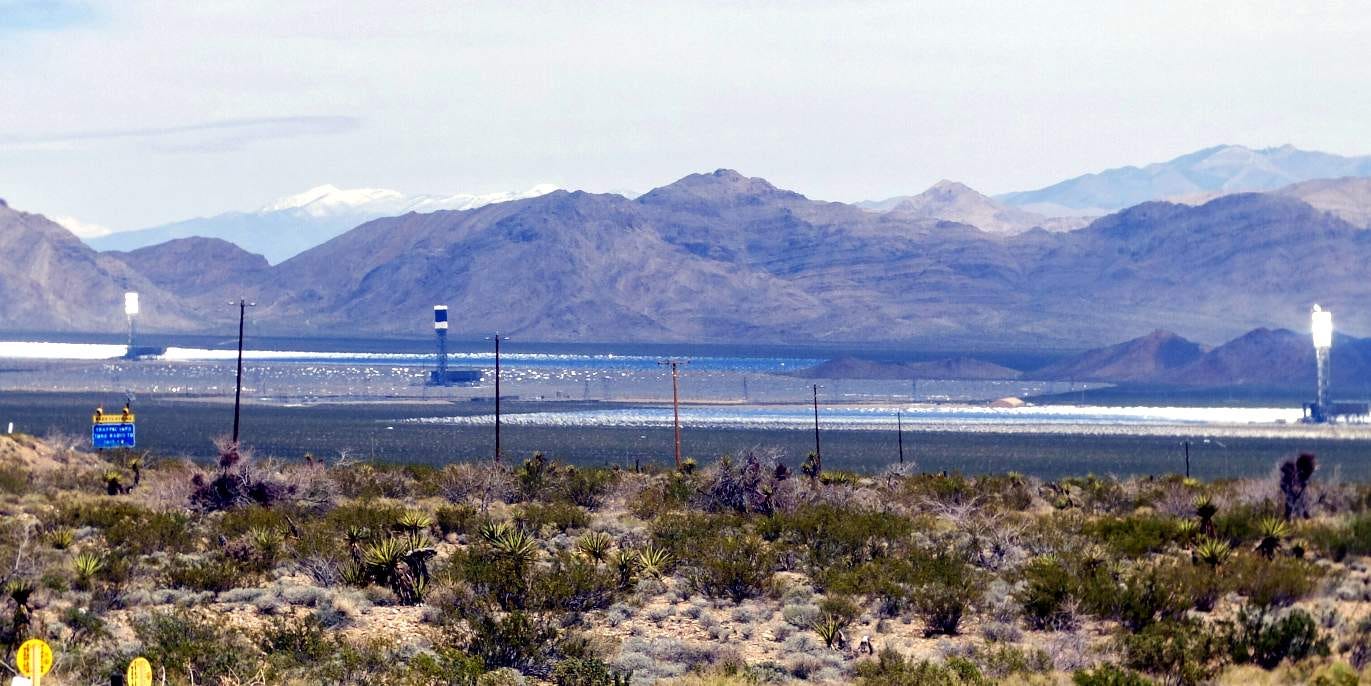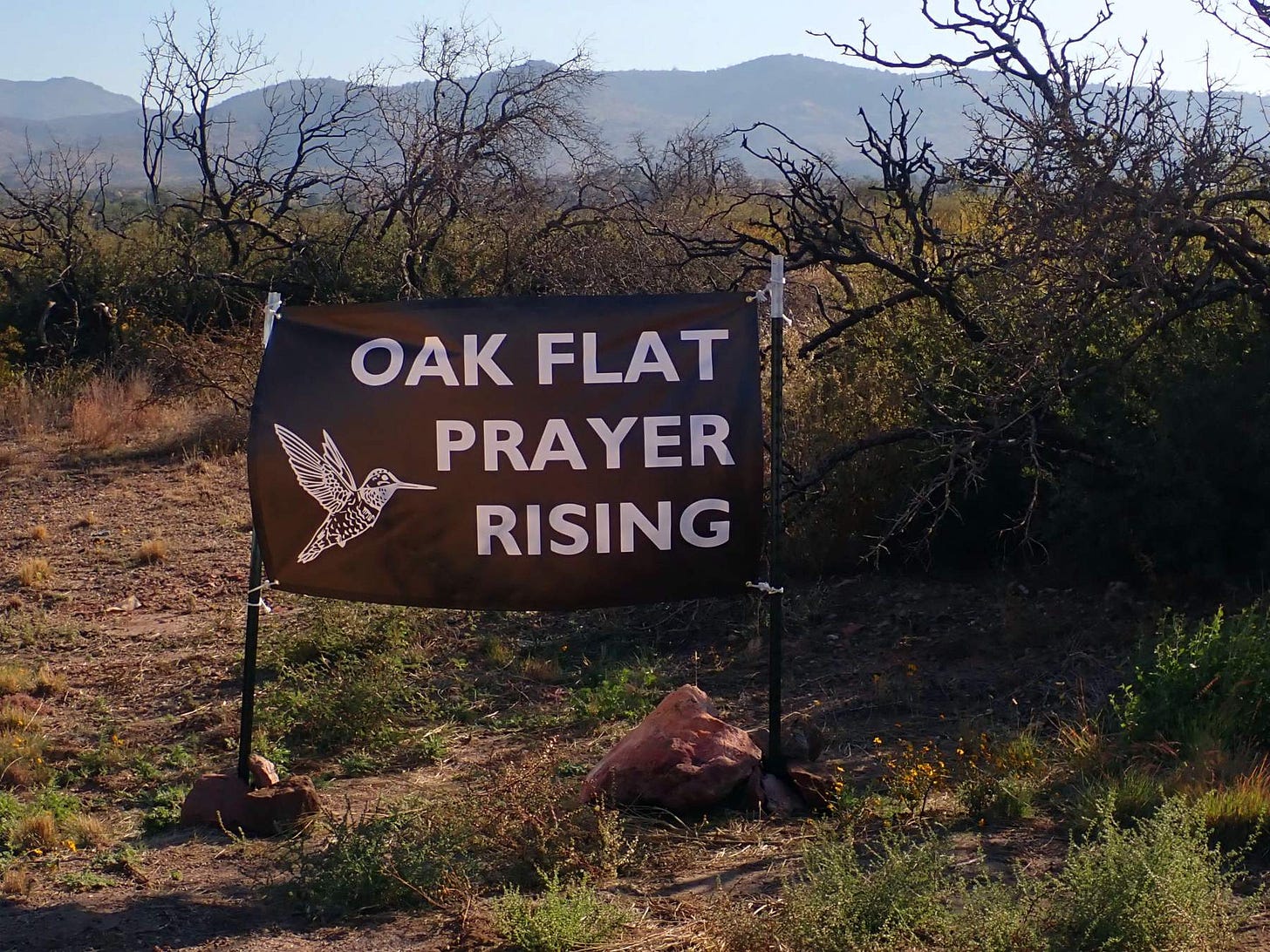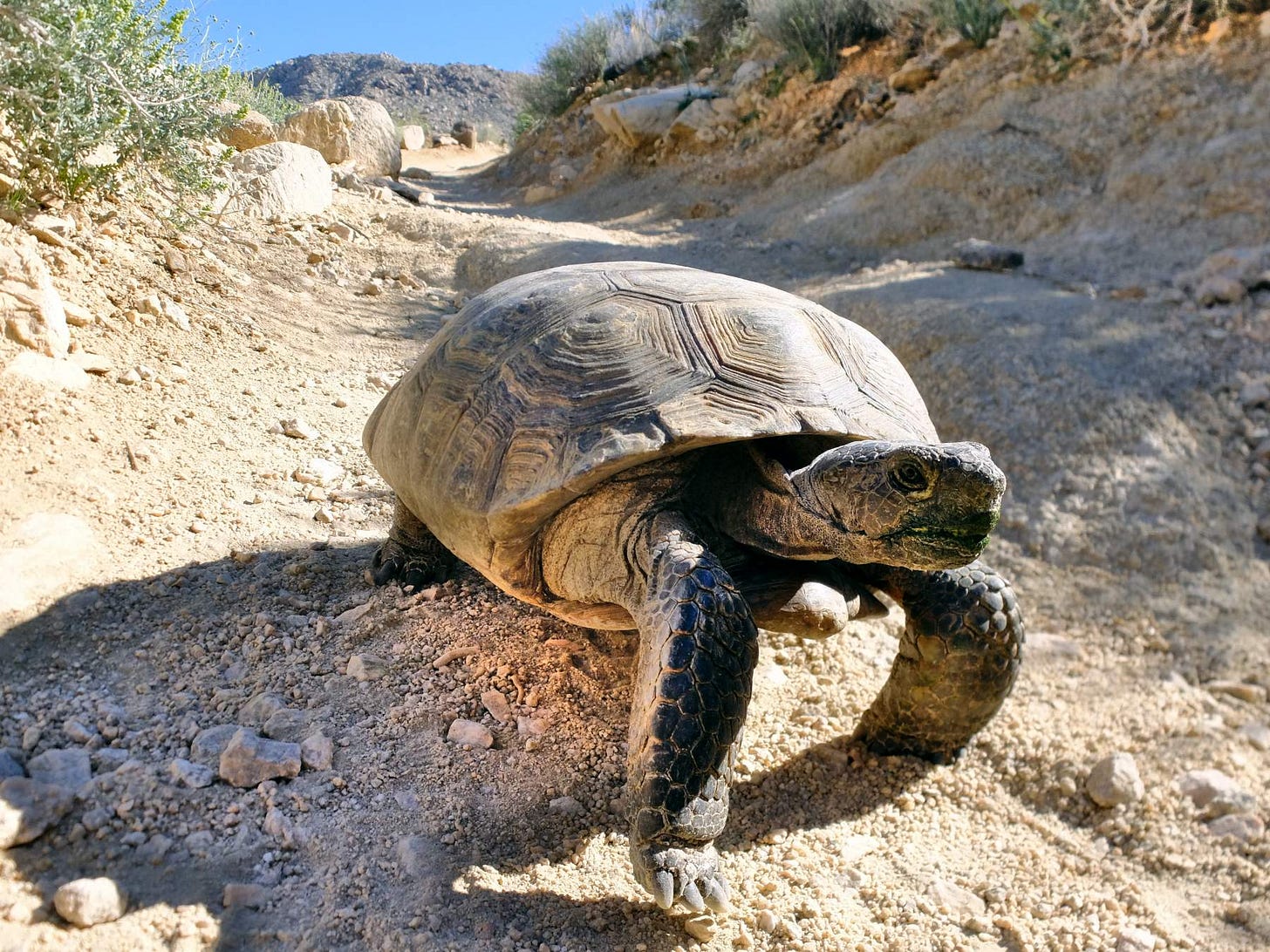“No” to a “Green Energy Transition”—“Yes” to an “Energy Reduction Transition”
Sustaining life not lifestyles

Once upon a time—but not so long ago—environmentalism was about protecting natural places and the flora and fauna who make those places their homes. But over the last decade, the scope of institutional environmentalism has been reduced to the issue climate change, and in turn the focus of climate change has been narrowed to carbon emissions. (The “other leg" of climate change is land use; see Rob Lewis’ three-part series on Substack, here, here and here.) Only in a world where carbon emissions are the sole environmental issue does the "green energy transition" pitch make any sense.
The pitch makes a big promise: Industrialized civilization can be sustained by swapping out fossil fuels for renewable energies like solar, wind, hydro and geothermal (with some tacking nuclear onto that list). The ubiquitous adjective “sustainable” has quietly shifted from being about sustaining ecosystems to sustaining human systems. We could call this pitch the “green energy transition media narrative.” Like all media narratives, it’s comprised of a mix of information, misinformation and disinformation; in other words: facts, inaccuracies, and lies. Mostly the last two, I daresay, because the narrative is primarily shaped not by science or ethics but by corporate and political forces whose pursuit of profit of power usually puts them at odds with science and ethics.
But a media narrative is only credible insofar as it hews to conventional cultural perspectives, perspectives that are shaped by the culture’s inherent and usually unacknowledged biases and beliefs about the world. A narrative that “colors outside the lines” too far will come off as implausible. In the case of the green energy transition media narrative, an unquestioned and deeply-held cultural belief at its core is the conceit that humans have “dominion” over the world, and that we can take what we want because it’s all ours. Some grassroots environmentalists—as well as a few thinkers in the fields of philosophy, history and theology, and also just some ordinary folks with a decent moral compass—are certainly aware of how problematic this belief is, but they are not the ones steering the narrative.
The green energy transition media narrative relies on a sleight of hand. Though the energy sources of sunlight, wind, water and the earth’s internal heat can indeed be described as “renewable” in contrast to fossil fuels, the infrastructure required to harness them has its own environmental footprint that is far from trivial, and indeed is quite substantial. The manufacturing of the facilities and the sourcing of the necessary materials require activities that are quite ecologically destructive, on a planet that has already been subjected to far too much ecological destruction.

One cannot manufacture solar panels with solar power alone, or wind turbines with wind power alone, or hydroelectric facilities with hydroelectric energy alone, etc., and this will never change. The mining and refinement of metals and minerals are energy-intensive processes that require fossil fuels. So do other processes including land use modification, transportation of raw materials, and construction. In the best case scenario, the potential of “green energy” generation to be “carbon free” doesn’t start until after it’s all set up, and excludes costs related to retiring the project when its useful life is over.
CORRECTION: There is never a stage of operation when these projects are completely carbon free. Here is a comment to this article from : “As just three of many examples: 1) switching stations, substations, etc. use SF6 to insulate electrical gear (to keep it from catching fire and exploding). The gas has a warming potential 23,000 times that of CO2 and is used all over the grid. Needless to say, it leaks (as all gases do). 2) wind turbines contain oil, grease and hydraulic fluids, around 800 gallons of lubricants. Needless to say, it often leaks. And it must be replaced regularly. 3) All technologies on a grid from the solar and wind to the grid lines and stations to the grid stabilization centers to the computers used throughout the grid need constant maintenance. This often requires workers traveling to stations and remote areas in, you guessed it, diesel trucks. I can go on. There is nothing "carbon free" about so-called "renewable" energy.”
The unspoken factor that pisses me off the most is wildlife habitat destruction, which all industrial processes require. Habitat is lost to the footprint of the power facilities themselves, to all the mining and refining of needed materials, and to supporting infrastructure like new power lines and roads. Given that habitat loss is the single biggest threat to wildlife worldwide and given that wildlife extinction rates are increasing, it’s frankly alarming that we’re talking about expanding that loss. But we are. Every single time we toe the line of the green energy transition media narrative.
Expanding habitat loss is an inevitable outcome of the “green energy transition.” We’ll need a fuck ton of rare earth minerals for solar panels, lithium for electric vehicles, concrete for dams, metals for windmills, etc. Plus a fuck ton of copper to upgrade the grid, including thousands of miles of new power lines, which will take out more habitat. And real estate to site it all, much of which is currently proposed to be in rural and wild areas on land that is considered “marginal” because it’s not farmable or easily habitable for humans, but which is somebody else’s home.
With the case of solar, wind, and lithium mining, such habitat loss in the US is set to occur at an industrial scale in places that have so far managed to escape the worst ravages of civilization: the western deserts, which include the entirety of the Mojave and the Great Basin, and the northern portions of the Sonoran and Chihuahuan. Because agriculture was so challenging in these places, and marketable timber mostly absent, they were spared the wide-scale destruction suffered by the hemisphere’s prairies, wetlands, riparian valleys and forests from coast to coast. As such, though these areas have been negatively impacted by ranching, mining, and hydrological alteration for both, they contain some of the most intact ecosystems remaining in the Lower 48. Many species of animal, plant, etc., are found only in these deserts, including endangered ones.
* * *
The Desert Tortoise is a particularly tragic case. This ancient reptile has lived in what is now the southwestern US for at least fifteen million years, dating back to the time when the climate was much moister and cooler. As the region became hotter and more arid, the tortoise adapted by spending more and more time underground, and today lives its life in burrows 90% of the time, emerging in the spring to feed on the brief flush of tender vegetation that emerges then before summer’s heat. Until the beginning of the 20th Century, their story was one of remarkable persistence, but since then habitat loss from human activities has been like a war waged on them. The Desert Tortoise is listed as “critically endangered” (one step worse than “endangered”) by the International Union for Conservation of Nature (IUCN). According to a 2018 study, the number of breeding adult tortoises in the western Mojave Desert fell by 50% between 2004 and 2018.
Moving Desert Tortoises out of harm’s way before construction—which is called “translocation”—is not a viable strategy. Researchers have tracked previous attempts, and survival rates in the new homes are often no better than 50%, and can be worse. Part of the reason is that tortoises don’t just forage at random. They have ancestral routes among patches of plants they revisit every year and which they teach to their young. Also, their new habitat is often less than ideal because they must compete with the tortoises already established there, who might be struggling themselves.
Not all tortoises at a proposed site are found. Juveniles can be as small as a silver dollar and are easy to miss. They end up crushed by heavy machinery, buried alive or otherwise killed when construction starts. It’s gut-wrenchingly sad.
(For more details about Desert Tortoise translocation, including a lengthy quotation from a biologist who participated in Desert Tortoise translocations, see my 2017 article about a removal project executed for the expansion of a military base: “Headlines should read: ‘Marines to Kill Tortoises.’” The details above were drawn from this piece.)
The survival of the Desert Tortoise as a species is very much in question right now. This ancient reptile can not afford to lose another square foot of habitat, yet many large “green energy” projects are being planned in their remaining fragmented habitat. Will we drive these amazing creature to extinction for “green” energy? Fuck that noise. I’m enraged by the prospect.
* * *
The “green energy transition” is not about saving nature, it’s about saving industrial civilization. Some people might say, no, it’s about saving capitalism, but I disagree. Unfortunately, too many socialists are equally as obsessed with “progress” as capitalists are and celebrate “development” just as much. That’s the biggest reason I’m not a socialist. I’m not interested in seizing the means of production just so they can be run by workers instead of owners, but are otherwise unaltered. I want to dismantle the means of production. If socialism is the best way to get there because it is potentially more democratic, okay, but I’m not seeing much talk like that among the institutional voices at the moment. I have hope that the young people of this country and the organizers in the Global South will guide socialism into a less anthropocentric space, given that they are increasingly informed by, and led by, indigenous people.

In the meantime, rather than building new energy infrastructure, we should be reducing the use of the infrastructure that already exists, with the goal of shutting it down as we can. The planet doesn’t need a “green energy transition.” It needs an energy reduction transition. “Sustainability” must be about sustaining life, not sustaining a lifestyle.
Which isn’t about individuals turning down the thermostat or biking more, though such choices have personal benefits like lower bills and improved health, both of which can make people happier and help empower them to support collective efforts. It’s about policy change that subsidizes conservation and localization rather than waste and corporatism. Cities and suburbs must become less car dependent by setting up free, convenient, pleasant public transportation, making cycling safe and enjoyable, and totally rewriting zoning laws to create mixed used, walkable neighborhoods. (Yes, fifteen minute cities!) Heating and cooling need to be more efficient, as well as all use of electricity and water. Urban agriculture will need to factor in majorly too. Big Ag needs to be dissolved, demechanized and dechemicalized, which will necessitate a higher proportion of the population being directly involved, and public funding for farmers must guarantee a generous living wage so they can focus on growing healthy food rather than catering to the vagaries of the market. Media needs to be decorporatized and democratized so we can actually learn the facts about our world, not just be spoon-fed establishment narratives, as is currently the case. Environmentalism must return to its original mission of protecting natural places rather than advocating for their sacrifice.
The energy reduction transition is also about radical systemic transformation that recognizes the rights of nature and of more-than-human creatures to keep their homes. And about dismissing cultural perspectives based on domination and human supremacy and embracing values steeped in collectivity and humility. And about smashing patriarchy and reclaiming our true human nature as one species among many in a planetary family. Ultimately, it’s about respect, true respect.
Yeah I know this sounds pie-in-the-sky to many folks, but I am compelled by the beauty and destruction I’ve seen in my life—by the majesty of old growth trees and their devastation by clear-cuts, by the diversity of intact tall grass prairie and its replacement by the monotony of corporate agriculture, by the sublime allure of sage brush steppe and its despoliation by lithium mining—to insist on calling attention to what must happen to avoid the dismal, lifeless wasteland that awaits us otherwise. I have observed only a small sliver of the wildlife habitat that exists on this amazing planet, and communed with but a fraction of its denizens, but these brief glimpses and encounters have been enough to ignite a fire in my heart, and I refuse to have it extinguished by the words, “That’s impossible.” It’s not. It just seems improbable, but that’s different.
In the end, one way or another—unless we all die in a nuclear war or a comet impact or widespread volcanism—such a transition will eventually be inevitable because it will be the only way to survive. The choice before us in our age is whether we strive to bring this system down for a soft landing with mutual aid or wait until we’re forced to crash by merciless entropy. The first choice will be accomplished with empathy, love, and compassion, but the second will be marked by malice, hatred, and tyranny. In short, it’s the choice between liberation and slavery for all life in this vibrant world, and I know which one I want. How about you?
* * *
For more information about the terrible ecological effects on our deserts from solar and wind projects, and from lithium mining, including heart-rending before-and-after pictures, check out the website of Basin and Range Watch. This non-profit environmental group, based in the northernmost corner of the Mojave Desert in Nevada, tracks and pushes back on industrial “green” development.






I share your rage. Thanks for speaking out for the real world.
Thanks, Tara, and you're very welcome! I will be posting more on this topic. And there's a podcast episode coming too!